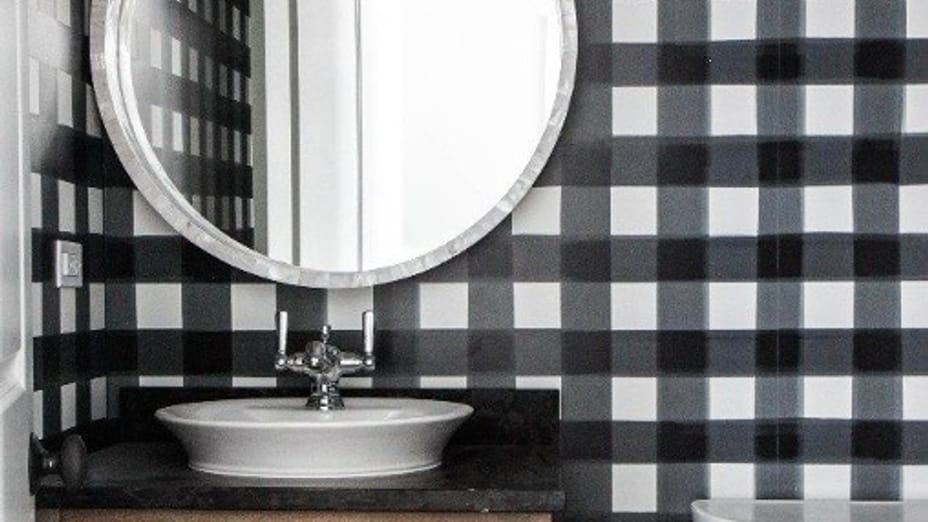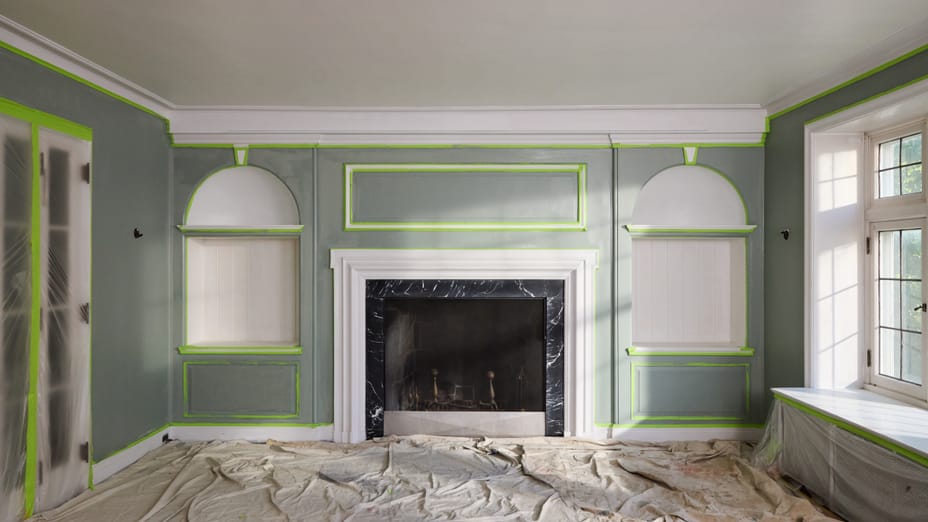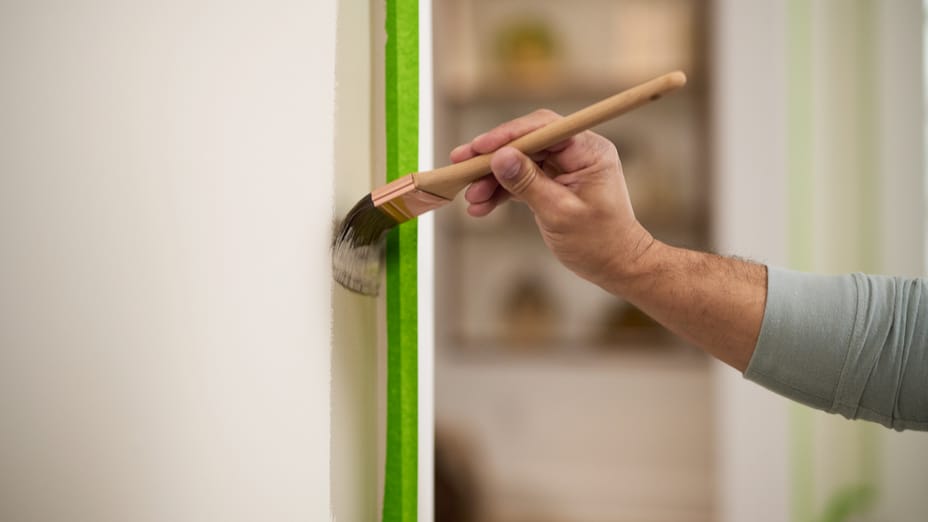If your walls could talk, what would the paint color say about you? Would it say you’re Bold? Sophisticated? Practical? Whatever the answer would be, painting interior design projects are a fun way to showcase your personality —whether it’s updating spaces with clean and modern colors or adding vintage flair.
Painting a wall with two colors instead of one allows you to say more about yourself and your style. Instead of your walls describing you as only bold, have them say you’re bold and energetic with the use of geometric shapes and electric hues. Make a sophisticated statement – but show flair with rich tones or go more subtle and calming with a neutral pairing. Show off that you’re not just practical but creative as well with an interesting pairing of colors.
A two-toned wall is an interior design technique using two paint colors on the same wall, whether divided evenly or in varying ratios. The style offers an affordable yet impactful way to uniquely express your personality and preferences and create visual interest in a room. This approach is a modern take on the traditional accent wall, which involves painting one wall a different color than the rest of the room. Read on to discover best practices that will enable painters of all skill levels to paint two color walls in any room in the house.
Mood and Hue: How Two-Toned Walls Can Influence Your Space
Two-toned walls typically feature a combination of a dark and light color, which adds dimension to an otherwise flat wall. Some painters may opt for a monochromatic look by using different shades of the same hue.
When painting walls multiple colors, consider the room’s purpose, in addition to choosing shades that best suit your style. Color theory outlines how different color combinations may impact your emotions and mental health, which can be helpful when determining the mood you’d like to set in the room. According to Mental Health America, warm shades stimulate energy and happiness, making them ideal for entertaining spaces like the kitchen or living room, while you might consider painting bedroom walls cool tones for a calming environment.
Wall Painting Techniques: Two-Toned Walls
Color blocking is typically executed in two ways: horizontally or vertically. Other, less traditional, approaches include dividing the wall with geometric patterns like diagonals. Whichever variation you choose will make the room look more dynamic by adding layers.
A horizontal scheme splits the top and bottom of the wall, making the room feel longer by leading the eye across it. A vertical variation is divided from the floor to the ceiling, making the room feel bigger by moving the eye up. The vertical approach is popular in open floor plans to divide a space or emphasize a chosen area.
The choice and placement of colors can impact the depth and dimension of the room. For example, using a light color on the top portion of a horizontally divided wall can make a room feel larger by creating an illusion of space. The light and airy color will make the ceiling appear higher. A dark color on the top portion will make the space feel cozier by making the ceiling appear lower. Conversely, a dark color on the bottom will give the feeling of a solid base.
You can determine the split between the two colors based on existing dividers, like wainscotting or upper and lower cabinets, which are divided evenly or aligned with an existing feature. Aligning it with a window, door, or shelf also works and helps create a focal point in the room.
Whichever approach you decide, painter’s tape, like FrogTape® brand painter’s tape, is essential for achieving clean lines when painting walls different colors. Factors including surface type, paint type, project duration, application area, and tape width can impact the tape you need for the job.
Step-by-Step Painting Process for Painting Walls Multiple Colors
Once you’ve decided on colors and placement, it’s time to get painting. Follow these steps to achieve professional results:
- Prepare to Paint
- Gather necessary supplies including a protective tarp or drop cloth; warm, soapy water and a sponge; putty and a putty knife; sandpaper; paint and primer; painter’s tape; a paintbrush; and a paint roller.
- Clear the room of as much furniture as possible and cover any large, hard-to-move furniture with a tarp or drop cloth.
- Using a sponge, wipe the walls with warm, soapy water, eliminating dust or grime.
- Repair cracks, holes, or groves in the wall with putty and sand until smooth. Wipe away debris left behind from sanding.
- Apply primer as a base coat, if needed. If you’re painting over a dark color with a lighter one, priming the walls is crucial to prevent the dark color from showing through.
- Measure and mark
- Determine where the colors will meet and mark the spot with a pencil or chalk. Use a straight edge to ensure the line is right across the entire wall.
- Apply painter’s tape
- Add the tape along the marked line to create sharp edges where each color begins and ends. Use a firm plastic tool to eliminate gaps and seal edges.
- Remember to tape adjacent surfaces including baseboards, ceilings, and walls.
- If you’re having trouble with the tape, common mistakes you may be making include applying it to a dirty surface, not pressing firmly on the edges, stretching it, or removing it too fast. Find guidance on how to combat these issues in this article.
- Paint the light color
- Apply the light color (the base color) one coat at a time until you achieve full coverage.
- With a paintbrush, start by “cutting in” using small brush strokes along the tape. Then, switch to a roller to fill in the rest of the section.
- Apply as many coats as needed to achieve the desired look, allowing each coat of paint to dry before applying the next.
- Paint the dark color
- Once the light-colored paint is dry for at least 24 hours, apply a delicate surface painter's tape to the freshly painted surface to get started on the two-toned effect on the other side of the wall.
- With the darker color, repeat the painting process by cutting along the tape with small brush strokes and using a paint roller to fill in the rest of the section.
- Apply as many coats as needed to achieve the desired look.
- Remove the painter’s tape
- For best results, remove the tape while the paint is still wet, pulling slowly at a 45-degree angle.
Try a Two-Tone Wall Today
Two-tone walls can transform a space to reflect your style with just a simple change. With the right supplies, techniques, and color selections, you can create a look that you’re proud of, regardless of your skill level.
For more step-by-step project tutorials, tips and tricks and creative inspiration, explore our Resources section.





